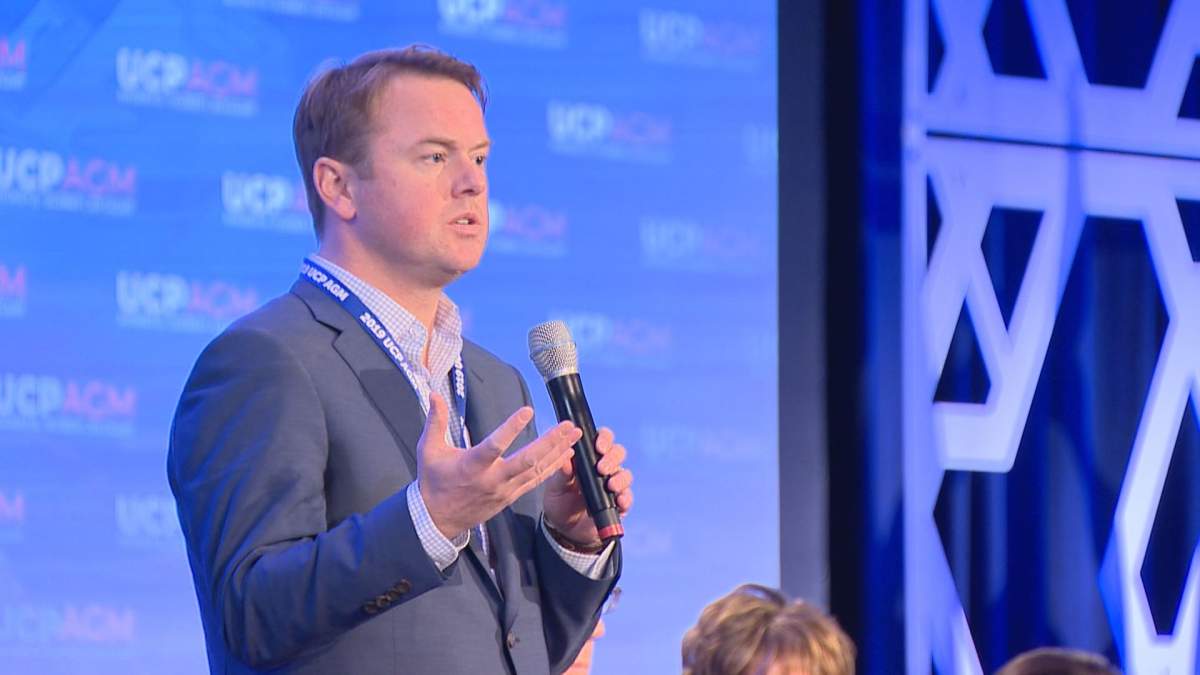Alberta’s medical system is getting prepped for some major surgery in 2020, and Health Minister Tyler Shandro says it starts in about two weeks with the release of a report expected to be the blueprint for change.

“We committed to getting wait times down, so now we’ve got to figure out a way to do it. That’s going to be the No. 1 thing,” Shandro said in a year-end interview.
The report, by Ernst & Young, has been reviewing the operations of Alberta Health Services, which is the day-to-day service delivery component of Shandro’s health department.
It will address roles and responsibilities, come up with ways to find savings, reinvest savings and review the relationship with private facilities contracted out to do work paid for by the public system.
READ MORE: Taber Clinic saving province millions with alternative funding model
It will likely also be just the first act in a drama featuring a government turf battle with doctors, a wage and job fight with nurses and other health workers, and the launch of Shandro’s plan to make the province a national leader on meeting surgery wait-time targets by adding surgeries and using more for-profit clinics.

Get weekly health news
Alberta is spending $20.6 billion on health this year, eating up more than 40 per cent of the operating budget.
A government-appointed panel, led by former Saskatchewan health minister Janice MacKinnon, has said rising health costs need to be addressed and that Alberta is comparatively getting substandard outcomes for the money it pays.
Alberta’s physicians take in $5.3 billion a year, and Shandro has already initiated changes outside of negotiations for the master agreement set to expire next March with the Alberta Medical Association.
The province has asked the AMA for feedback on changes it plans to make starting in the new year, including extending the amount of time a doctor must consult with a patient — to 25 minutes from 15 minutes — before an add-on fee kicks in.
Shandro says the change is needed to make those consultations more effective, but some doctors have said that will force them to cut other consultations to as little as 10 minutes, potentially compromising care, in order to recoup the funds needed to keep their practice going.
Shandro said he’s heard those complaints, but says they suggest the current payment method, called fee for service, doesn’t work and supports his argument that a new remuneration plan is needed.

Dr. Christine Molnar, head of the AMA, has said some of the proposed changes should be part of the master agreement negotiations, while Shandro’s department insists it has the statutory power and will use it.
“The consultation is an end-run around negotiations for many of the proposals that legitimately belong at the negotiating table and must remain there,” Molnar said in an open letter to members Dec. 9.
Shandro also faces challenges on the labour front, with unions promising a fight after the government sent letters suggesting as many as 5,000 job cuts over the next three and half years as part of restructuring, including 500 full-time nursing jobs.
READ MORE: Alberta Health Services cutting hundreds of nursing positions: UNA and NDP
The Opposition NDP, meanwhile, has also called Shandro’s plan to use more for-profit clinics to reduce wait times the thin edge of the wedge to American-style care, where patients pay out of pocket or through private plans to get medically necessary procedures.
Not so, said Shandro. He said the delivery method may change, but not the cost.
“I have zero interest in forcing anybody to pay for medically necessary services,” he said.
READ MORE: Alberta surgery initiative aimed at reducing wait times, funding up to 80,000 more operations
He said Alberta already has clinics and family doctors running their own offices while doing work paid for by the province.
The goal, he said, will be how to find the right mix of care, as is done in Europe, to get more work done to free up bed space in hospitals and get more surgeries done in hospitals by, say, adding extra shifts and finding specialists to staff them.
“This is a complex system,” he said.
“Every time you touch anything in the system, there’s going to be ripple effects everywhere.”
READ MORE: Some Edmonton-area patients are waiting 7-9 months for CT scans








Comments